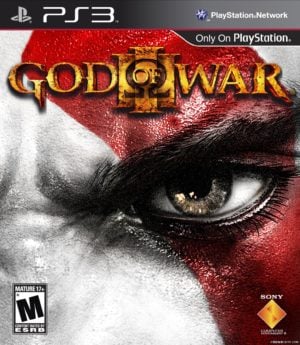The young archaeologist Lara Croft is traveling aboard the ship Endurance with a crew to locate the prehistoric Japanese kingdom of Yamatai and the mysteries of the Sun Queen Himiko and her supernatural abilities. Contrary to the advice of her companions, Lara continues to the Dragon’s Triangle, a region plagued by enigmatic storms. When one of the storms strikes the ship, everyone is stranded on a presumably desolate island. Lara’s mission is to reunite the crew and learn more about the island. She must battle the Solarii, a cult commanded by a mysterious individual who has taken an interest in Samantha Nishimura, Lara’s friend.
The ninth installment in the long-running Tomb Raider series is a complete reboot and antecedent to the franchise. Like its antecedents, this game features Lara Croft in an action-adventure setting. Compared to previous installments, the gameplay differs in numerous ways. Similar to the Uncharted series, there is a greater emphasis on stringing together stylized action sequences involving shootouts, escaping through a crumbling environment, and fighting human adversaries. There are still animals, but they pose a minor threat and are primarily hunted. The objective of puzzle-solving, which consists of moving objects to construct paths to progress, is severely weakened. There are still puzzles, but they are primarily limited to utilizing various instruments on predetermined objects. Optional areas can be discovered and accessed, but exploration is limited to a series of interconnected centers that provide linear progression instead of the open worlds of contemporary games like Far Cry 3.
Lara is permitted to traverse the island linearly through various regions. There is always a direct objective to achieve, but certain areas can be investigated freely in the interim. There is a forest, different abandoned villages, bunkers, and enormous temples. Lara can ascend, duck, dangle from ledges, use an axe to scale rocks and build and utilize zip lines, among other skills. Activating instinct can be used to emphasize goals. It renders the entire environment monochrome but highlights vital objects, adversaries, and the current location’s objective. Each hub area contains one or more checkpoint-functioning campsites. These can be used to fast travel, expend skill points, and improve equipment. The entire environment is also viewable via a miniature map. In addition to the primary gameplay, there are numerous scripted quick-time events in which Lara swims down a stream, parachutes through trees, runs across crumbling bridges, and escapes from burning structures. These frequently feature varying camera angles and require fast reflexes. There is no health bar, but when Lara is injured, the screen fades to hues of grey. When taking shelter, health is gradually restored over time.
This title has a greater emphasis on action, and the combat sections are much more extensive. Lara can utilize a variety of weapons, including pistols, shotguns, and rifles. Her bow is her most essential weapon. It is used to attack from a distance, with optional flame projectiles, but can also be employed to distract foes and build makeshift bridges. The cover is a concealment mechanic automatically activated when near an object. The numerous attackers can be eliminated at a distance by targeting specific body parts or up close with melee attacks and finishing moves. The enemy leaves behind additional ammunition. At base camps, numerous weapons can be upgraded and modified in various ways. These resources are obtained through salvage, looting adversaries, or discovering crates in the environment. Experience points can be exchanged at base camps for talent in three categories: Survivor, Hunter, and Brawler, with varying tiers. Upgraded weapons offer new and improved options, which is true of upgraded abilities. Lara learns to avoid attacks, identify objects in the environment, and divert enemies with sand. She also carries a flashlight to illuminate dark backgrounds, and fire plays a significant role in several puzzles.
A significant quantity of optional treasure hunting is available. Each region contains several documents, antiquities, and GPS caches that can be found for additional experience points. Each area has distinct challenges, such as torching flags, snatching eggs, and destroying particular objects. On the map screen, the completion status can be viewed. Using instinct and a high level of survivor skills, it becomes simpler to detect hidden objects later on. In keeping with the origins of the series, several optional tombs resemble those from earlier titles. To locate and steal the treasure from these distinct locations, a higher level of puzzle solving is required than customary.
There is online multiplayer for up to eight players with various playable characters. A global experience system rewards leveling up with new weapons and abilities. Before each event, a load-out can be defined by multiple factors. In addition to free-for-all and team deathmatch, the game also features the team-based modes Rescue and Cry for Help. The Survivors are pitted against the Scavengers. In Cry for Help, the Survivors must activate and maintain radio transmitters across the map, while the Solarii disrupt the process and must steal batteries. In Rescue, the Survivors collect medical supplies as the Solarii attempt to prevent them.
















